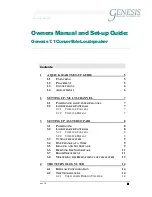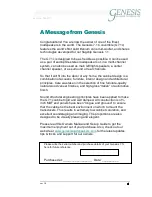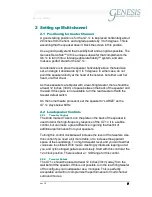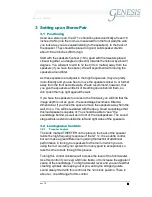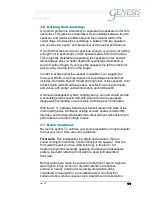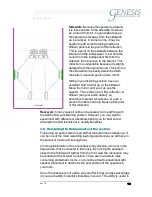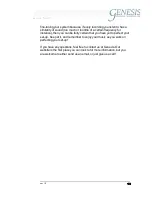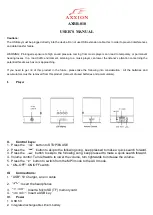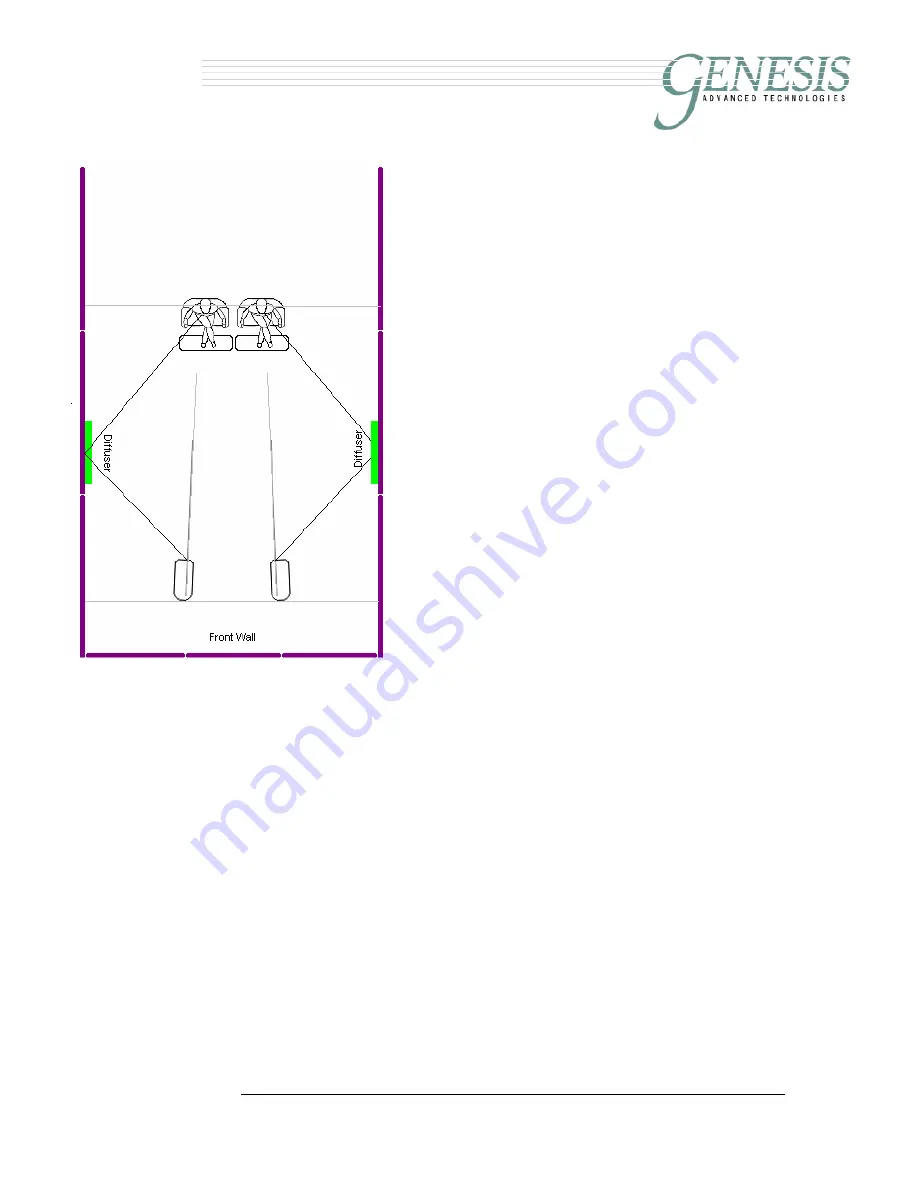
ver 1.0
12
12
12
12
absolute fidelity
Sidewalls
. Because the speaker is a dipole,
it is less sensitive to the sidewalls. However,
as a rule of thumb it is a good idea to keep
the speaker as far away from the sidewalls
as is practical. In some rooms, it may be
helpful to add some damping material or
diffuser panels to the point of first reflection.
This is a point on the sidewalls between the
listener and the loudspeaker. It is where the
sound from the loudspeaker first hits the
sidewall, then bounces to the listener. This
reflection is undesirable because it is slightly
delayed from the original sound. This point on
the sidewall can be easily determined with
the help of a second person and a mirror.
Sitting in your listening position, have an
assistant hold a mirror up on the sidewall.
Move the mirror until you can see the
tweeter. This is the point of first reflection. A
diffuser (see your audio dealer), an
absorptive material, a bookcase, or even a
piece of furniture can help break up this point
of first reflection.
Rear wall.
In many cases it will be unnecessary to do anything with
the wall behind your listening position. However, you may want to
experiment with diffusers or absorbers behind you for best sound.
Absorption behind the listener is usually beneficial.
3.8
Mastering the Refinements of the system
Fine tuning an audio system is an art that will take time and patience. It
can be one of the more rewarding learning experiences you will have in
the pursuit of music and its enjoyment.
In some problematic rooms a resonance may develop, at one or more
frequencies, that is unnatural to the music. By moving the speakers
closer to the front wall or farther from the front wall, the resonance may
be reduced at the listener’s position. There are no absolute rules
concerning problematic rooms, so do not be afraid to experiment with
speaker placement to determine the best position of the speakers in
your room.
One of the best pieces of advice we can offer is that you take advantage
of your ear's ability to identify similarities in sound. This ability is useful in


